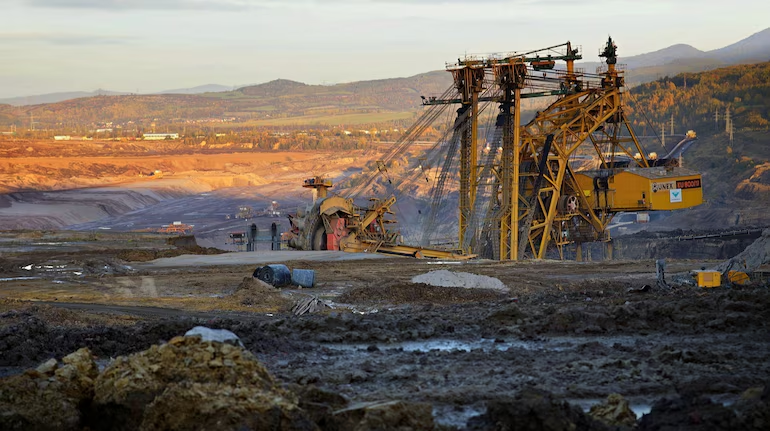
Summary
- The world’s population is set to peak towards the end of the century, while Europe’s population will decline over the same period.
- A smaller population size does not automatically mean a country is weaker on the world stage.
- However, shrinking and ageing populations pose a number of challenges to the EU and European states, including how to maintain the lure of the European single market and how to protect the continent from security threats.
- European policymakers should ensure they take the demographic challenge into account when making decisions around completing the single market and pursuing EU enlargement; they should regard these policies as ways to increase the bloc’s population size.
- Policymakers should also bring existing members of the population in Europe into the workforce, including women and younger and older people, and also make best use of technology in workplaces.
- The EU should prioritise stronger partnerships with countries and regions around the world that have burgeoning populations and would benefit from investment in education and technology. This could include expanded legal migration channels to bring new members of the workforce to Europe.
Make demographics normal again
Europe faces many pressing challenges, from Russian aggression to sluggish economic growth to a complex energy transition. How European policymakers respond to these issues will shape the continent in the decades to come. Yet, another challenge is equally important but can be overlooked because of how slowly it plays out: the demographic transition.
Populations in most European countries are shrinking and ageing as fertility rates decline. This trend could affect Europe’s economic relationship with the rest of the world. It will also throw up numerous questions about how Europeans structure their welfare states, and have major knock-on impacts on other policy areas too. But with most parliamentary terms in Europe lasting only up to five years, it can be difficult for policymakers to plan ahead to the 2050s and beyond. Still, the time to act is now. Policies to influence demographic trends implemented today will take decades to produce results.
It is important to understand what works, and what does not. “Natalist” policies often embraced by far-right governments, like tax breaks or cash handouts for couples who have more children, are extremely costly. And in any case, they appear to be ineffective. Under prime minister Viktor Orban, Hungary offers its citizens some of the world’s most generous family subsidies—spending on this exceeds 5% of the country’s GDP—and yet birth rates have barely shifted. Nor are abortion restrictions and bans (another favourite of rightist natalist groups) any more impactful: most US states with such measures have experienced declines in birth rates, while child mortality and child poverty have increased.
It is time for Europeans to address demographic decline not through ideologically driven solutions but by deploying policies that target both the causes and the effects of those trends. Population change and how to deal with it ought to belong to the realm of normal policymaking.
This policy brief considers how demographic change could affect Europe’s place in the world and how to strengthen this place as a consequence. Europe’s position vis-à-vis other world powers is not bound to become more precarious because of a falling, ageing population; many factors are involved in shaping power internationally. Despite the many challenges caused by European demographic decline, global trends also offer significant opportunities for Europe to keep playing an influential role on the international stage. To address this, decision-makers have options they can pursue for both the short term and the long term. Central to this should be a concerted effort to build effective partnerships globally while also pursuing policies within the EU’s control, on its own territory.
The world ahead
Around 8.2 billion people live in the world today. The end of the Black Death pandemic in parts of Europe and Asia in the mid-14th century was followed by an uninterrupted period of population growth. For almost 700 years, humanity has relentlessly expanded, with most growth taking place in the 20th century as living conditions markedly improved and child mortality sharply declined. The global population might now be close to peaking: projections by UN World Population Prospects—the world’s most comprehensive and detailed demographic forecast—indicate the global population is likely to reach10.4 billion people in 2084. While the exact date of the peak and total number of people cannot be forecast precisely, what matters is that the global population will reach a maximum towards the end of the century and then start falling, however slowly.
This peak is the result of progressively slower rates of population growth coupled with lower mortality rates and extended life expectancy all over the world. Such a trend is called a “demographic transition”—a society’s evolution from a situation of high birth rates and high mortality rates towards one where both are substantially lower. Typically, a given population starts from a place where high birth rates and mortality rates tend to compensate for each other: many children are born but few reach adulthood and life expectancy remains low, limiting population growth. As mortality rates begin to fall thanks to improved living conditions, healthcare and longer lifespans, birth rates remain high and the population experiences rapid growth, with many more children becoming adults and living longer. Birth rates then start to fall, while mortality remains low, allowing for a continued expansion, albeit at a slightly slower pace.
This transition is driven by many factors. One is the status of children, which changes: it becomes more “valuable” to have fewer but more educated offspring, unlike in preceding agrarian economies where it was important to have as many children as possible to provide physical labour to support family and community units. Alongside this, women tend to have fewer children once they secure more personal and economic independence. Ultimately, the level of a population’s growth at the final stage of the demographic transition is determined by birth rates alone, which progressively slip below the replacement rate of 2.1 children per woman. Ultimately, over the long term the population shrinks as births fail to compensate for deaths.
Different countries around the world are currently in different stages of the demographic transition. Most advanced economies are in the later stages, with very low mortality and birth rates. In numerous cases, they are already experiencing a decline in their total population. Meanwhile, many middle-income and developing countries’ populations are growing, and are set to peak somewhere around the middle of the 21st century. The least developed countries—many of which are in Africa—are on course to continue growing even towards the end of this century.
The projected global population peak in the mid-2080s thus obscures many diverging national trends, even within the same level of economic development. (See below for more on divergences within Europe.) The only trait all countries share is that birth rates are declining: women all over the world are having fewer children, from advanced European economies to lower-income countries in sub-Saharan Africa. This trend cuts across cultural, economic and religious boundaries.
The world is also progressively ageing, as lower birth rates and increasing life expectancy mean populations become older on average: by the late 2070s, the number of people aged over 65 globally will surpass the number of people under the age of 18. In several advanced economies this is already a reality: at the end of 2023, in Italy there were 14.3 million people aged over 65 and only 8.9 million under the age of 18. The world ahead is set to be substantially greyer, with the global median age rising from 30.6 in 2025 to 35.8 in 2050. The pace of global ageing differs significantly from country to country and is most acute in advanced economies, where more and more people live until very old age in relatively good health.
According to UN World Population Prospects, the main driver of global population growth until the middle of the 21st century will be the momentum of past growth: demographic dynamics are mostly long term in nature and falling birth rates have significant effects decades after they have happened. This means that there are few short-term phenomena that can impact significantly on such ongoing trends. Even the effects on European life expectancy of the covid-19 pandemic had been reversed by 2022, merely two years after the first lockdowns. The only major factor that cannot be accounted for precisely—and that can significantly alter demographic patterns over a short period of time—is migration.
The world’s population will not diverge from current projections, but different flows of migrants from growing countries to shrinking countries can meaningfully change the shape of the world to come. Thus, while any successful policy approaches to boost birth rates will not show benefits before a couple of decades have passed—by which time dependent children have become workers—only migration can make a quick impact in terms of working age population.
Demographics and the global balance of power
The global demographic landscape is extremely diverse: some countries are experiencing rapid ageing and decline, while others are seeing rapid growth in the short term or are set to witness sustained population increases up to the year 2100. These trends are likely to impact on the balance of power on the global stage. Most (but not all) Western countries face a decline in their population. In contrast, African and Asian countries will account for most of the population growth in the coming decades.
Many factors determine a state’s power vis-à-vis other states in the world, among them population size. Countries with declining populations run the risk this could undermine the strength they are able to project. Countries with expanding populations may be able to use this to help increase their influence in global affairs. The United States’ international dominance around the turn of the millennium has progressively given way to a more nuanced system characterised by the rise of China. Global demographic dynamics will push this multipolarity even further.
Asia
India became the world’s most populous country in 2022, overtaking China, and its population is set to reach 1.6 billion by 2050—although its median age will move from 28.8 today to 38.3 by mid-century. India’s population growth is even more staggering if compared to China’s (slow) decline and (rapid) ageing: in 2050, the Chinese population will be barely above 1.2 billion people and the median age is projected to stand at 52.2, up from 40.1 today. China’s greying and shrinking population is largely the result of the Communist Party’s one-child policy implemented between 1980 and 2016: by officially limiting couples to only one child, China boosted its economic development chances, as the working-age population greatly outnumbered young and elderly dependents in what is termed a “demographic dividend”.
Yet the price of that choice is the presence now of a huge cohort of people who are on the brink of retiring but who will not be replaced by a younger generation of similar size. (China also has some of the lowest retirement ages in the world, recently increased to 63 for men and 55 for women.) In the context of South-East Asia, an ageing China will additionally face the rapid growth of Indonesia: the Indonesian population already totals 284 million people and will reach 320 million by 2050. Western allies in the region fare no better than China, however: Japan and South Korea already have very high median ages, 49.8 and 45.6 respectively, and will both bust past 50 by 2050. Their shrinking and ageing populations could harm their ability to maintain their vital economic role in the region and to support their defensive capabilities counterbalancing China.
Europe
Many European countries face a similar future, although there are exceptions. According to the latest revision of the UN forecast (medium variant), the populations of several key European states peaked prior to 2025 and have now started to fall—even accounting for current migration inflows. The continent’s largest country by population and its economic powerhouse, Germany, has entered a decline and is estimated to “lose” around 6 million citizens over the next 25 years. This could weaken its economy at a time when the country is already struggling to find an alternative to its export-led growth model. Italy’s future is even starker: its median age will rise from 48.2 this year to 52.9 in 2050 and its total population will shrink from 59 million people to 52 million people. The country’s chronic fiscal instability is receiving a massive blow as the “baby boomer” generation leaves the workforce and is replaced by a younger population that is much smaller in size. Spain’s predicament is similar to Italy’s.
The only major eurozone economy whose population is set to grow up until the end of the century is France—expected to peak at 68.5 million people in 2096, helped by a fertility rate that is higher than average (for an advanced economy) and by a sustained contribution from migration. Migrants will also help fuel a great part of Britain’s economic growth, the only other major European country expected to have a bigger—even if slightly older—population in 2050 compared to today.
Africa
If Europe is on the demographic decline, Africa is set to undergo a demographic boom. Its population of 1.5 billion people is expected to reach almost 2.5 billion people by 2050 and 3.8 billion people by the end of the century. This boom will be largely concentrated in sub-Saharan Africa; North African countries are ahead in the demographic transition compared to the rest of the continent, although Egypt will surge past 160 million inhabitants by 2050. Spearheading the African population boom is Nigeria, which will grow from its present-day 235 million inhabitants to almost 360 million by 2050. Ethiopia will add almost a hundred million people between today and 2050, when it will reach a population of 223 million people. In contrast to Africa’s population of 2.45 billion, the EU’s total population in 2050 is expected to decline to just 421.7 million people.
*
The world is becoming significantly less “Western”, with a growing share of the global population living in the global south. This is a heterogeneous group of emerging economies, many of which are unaligned with Western powers. Different factors will impact on their ability to project influence, most importantly the capability to turn their demographic dividend into significant economic growth and development. The sheer size of a working-age population is insufficient to ensure a prosperous future and a widespread influence. Education, productivity and access to technology are essential elements to turn demographic advantages into economic power, and—especially for developing countries—so too is being able to provide adequate jobs for booming populations.
The biggest exception in the West is America. Unlike its European and Asian allies, the US population is set to continue growing until the end of the century: 380 million inhabitants in 2050, up from 346 million today, and 421 million by 2100. Migration plays a significant role in allowing population growth in the US, even as its birth rate falls. This growth could continue to support American power. Still, the populations of America’s friends and allies are still set to decline (assuming these friends and allies remain broadly the same even after the second Trump presidency), which could impact on American influence in the world. China’s demographic trends may undermine its ability to ever reach superpower status alongside US, but its size will help keep it a major global player. Both countries will have to face a world in which a loose grouping of global south countries become relatively more powerful. To date, these countries have been characterised by a willingness to cooperate with either America or China, depending on the issue, and a refusal to pick a side in this rivalry.
Demographic challenges for Europe
It is impossible to identify the powerful countries of tomorrow based exclusively on demographic projections; many factors contribute to shaping the future of nations. Nonetheless, demographic forecasts for 2050 carry a high degree of certainty, since—barring unpredictable and highly disruptive events—policies enacted in the coming years will affect birth rates only beyond that time.[1]
On current projections, Europe is the continent that faces the greatest challenges, as it is the first to reach the final stages of its demographic transition. The continent’s shrinking and ageing population has particular implications for the European economy and for security.
The single most important asset the EU possesses is the single market. The bloc’s status as the world’s largest trader of manufactured goods and services and common—albeit not yet fully completed—market of over 440 million consumers makes the EU an attractive trade partner and a global economic player. It is already the main trade partner for around 80 countries in the world. The bloc has long used trade policy and negotiations to further its foreign policy interests, leveraging the size and wealth of its internal market to influence partner countries’ political economy.
Yet, the demographic transition means the single market is set to become smaller and less attractive. Fewer people in Europe will mean fewer customers buying goods and services across the common market; European firms will see smaller domestic sales. Foreign states may therefore become less open to accepting major concessions in return for access to less appealing European markets. This, in turn, will significantly weaken Europe’s ability to project its power, its regulatory influence and its role on shaping standards globally. In addition, older retired people tend to buy less than workers, which will further reduce the attractiveness of European markets.
Population ageing in Europe is also expected to exert downward pressure on productivity and innovation within the economy, as well as on the level of potential growth according to studies by the European Central Bank. This will further weaken the fragile European innovation scene, damaging future growth and development prospects. At the same time, older populations combined with fewer workers will tighten the fiscal space available to European states. An increasingly large share of expenditure will be required to bankroll defaulting pension schemes and fund the healthcare and support services used by older people. This will impact on the financial support available for R&D investment, infrastructure upgrades or incentives to help firms to adopt new technology. In such a scenario, Europe will see the economic and productivity gap between itself and the US widen yet further.
European security and defence will also be affected by demographic decline. Despite the current surge in defence expenditure, driven by the worsening security situation in Europe, many European armies have been shrinking in size and have experienced difficulties in meeting recruitment goals. In part, this is already to do with populations ageing, but in the future the available pool of citizens of the right age to serve in the military will continue to shrink, meaning so too will the number of people joining the armed forces. In a more unstable world, Europeans are likely to be called on to increase their deployments abroad, whether as deterrent, peacekeeping or active fighting forces. Countries might be forced to adopt mandatory conscription even in peacetime.
The war in Ukraine shows how, even in a technological era when swarms of drones fill the skies, manpower is an essential resource. While Kyiv has been able to partially offset its manpower disadvantage, thanks to more sophisticated Western weapons and conscription, it has still drafted more than 1 million people since February 2022, out of a total pre-war population of just 45 million. Russia, meanwhile, is estimated to have already lost almost 1 million troops (killed, wounded or missing), which is a huge number even for a country of 144 million people. European countries mostly rely on professional military forces of small size compared to their total populations, yet the plans to rearm European countries are taking place with demographic trends that make this task more challenging. Demographic decline could also undermine European defence from the budgetary side: the old dilemma of guns vs butter will become ever sharper as populations age.
Demographic trends that impact on the economic and defence capabilities of Europe could undermine the EU’s relevance as a global actor. Europeans will find it difficult to maintain or increase their influence and power projection as the size of their economy shrinks and their economic leverage weakens. However, even within increasingly constrained circumstances, there are opportunities for Europeans to seize.
Cherry-picking opportunities
As noted, current demographic trajectories are unlikely to change in the short term. But policy decisions taken now can still influence medium- and long-term perspectives. Additionally, even in the coming years, Europeans can exploit opportunities and benefit from developments in different parts of the world.
America
A first, unintentional, ally in this quest comes in the form of US president Donald Trump. His draconian policy choices on curbing migration and even legal access to the US, coupled with mass deportations—often without due process or judicial oversight—are starting to have an effect. Border crossings at the US southern border have declined to pandemic-era levels, although they had been steadily falling since the peak of December 2023. The number of west Europeans travelling to the US has also experienced a double-digit drop year on year, largely due to growing tensions and fears of harsh procedures upon entry.
While those European trends are mostly related to tourism, concerns about entering the US are all too real within the country, including, for example, among officials of international organisations located in Washington, DC.[2] Trump’s clampdown on migration has been coupled with a federal funding freeze on universities that do not fall in line with the priorities of the White House. Funds for academic institutions—including the world-class Harvard, Cornell, and Columbia universities—are being withheld over allegations of anti-Semitism due to campus protests over the Gaza war and diversity, equity and inclusion initiatives. This risks making US educational institutions less attractive and competitive to teachers and students from overseas.
It will take years to discover whether Trump’s immigration and education policies cause permanent damage, but for the remainder of the administration the US is likely to be a relatively less attractive destination than it once was. Europeans should capitalise on this. The EU hosts scores of world-class universities and research institutes, enabling it to act on two levels: on the one side, it could attract prospective students from all around the world that are doubtful about today’s US; on the other, European decision-makers can make a smart appeal to academics based in America, offering them the opportunity to escape Trump’s restrictions on their freedoms. The latter policy has been hinted at by French president Emmanuel Macron, who has said France would welcome researchers from around the world. This is also official policy, contained within the “France 2030” strategy—the country’s plan to boost innovation and competitiveness through research and technology.
Initiatives that attract talent from the US are essential to addressing the negative effects of Europe’s demographic decline and to make the most of population growth in other parts of the world. In the end, education and research leadership are not just important soft power tools; they also help fuel economic growth. Even if the Trump effect does not last forever, Europeans can begin now to make their continent the leading destination for global talent.
Russia and China
Europe’s two strategic rivals, Russia and China, are also impaired by their demographic trends. Indeed, their trajectories look particularly daunting.
Even before launching its full-scale war against Ukraine, Russia had already been facing significant demographic challenges, including a rapidly ageing population, much higher adult mortality rates compared to European countries, and declining birth rates. The war has exacerbated these trends: young men keep dying on the battlefield instead of starting families; fear of conscription has pushed almost a million highly educated citizens to flee abroad; and the war economy drags resources away from health and education services. The brain drain is especially harmful, as it is taking place not only during a period of existing labour shortages, but it also hampers medium- and long-term growth prospects as highly educated individuals leave.
The qualitative, more than the quantitative, loss of high-skilled labour is likely to drastically accelerate the economic decline of the country. Russia’s population is projected to decline from 144 million inhabitants today to 136 million by 2050 in the UN’s median estimate, or even 126 million on its lower estimate, with a marked decline in ethnic Russians. A smaller, older and less educated Russia would play an increasingly limited role in global geoeconomics and would be further weakened by the energy transition that is already undermining Russia’s major global exports.
The picture is different for China, although it is also challenging. The country’s rapid population decline and ageing spell trouble for its economic future: without a proper public social care system, households bear the cost of looking after older people. This will aggravate the issue of depressed domestic demand, which is arguably the major constraint on Chinese economic growth. Furthermore, population decline also limits the size of China’s future labour force and will erode growth potential in the decades to come. Wary of focusing any stimulus on households, the Chinese Communist Party leadership is primarily doubling down on an export-led model characterised by massive overcapacity in industrial and consumer goods. Official policy already plans to compensate for the future smaller domestic workforce by aiming for full automation in manufacturing and also in some service sectors. The political leadership is absolutely not willing to countenance immigration as an option to address some of the challenges facing it. Yet, the extent to which robots will really be able to fix the workforce shortage is doubtful, and nor would their mass adoption solve the domestic consumption issue: robots hardly buy dishwashers, laptops or cars.
The array of challenges facing China opens up opportunities for Europe and its own relationships with developing countries and emerging economies. (The same is even truer for Russia, whose outsize international role lacks an underpinning of economic strength.) First, most developing countries, especially in the Indo-Pacific, are keen to develop their own manufacturing bases and are growing increasingly resentful about cheap Chinese efforts that undercut domestic production. Demographic decline in China will only accelerate this tendency, and trade tensions fuelled by Trump’s tariffs are already rerouting exports from the US to Asian economies. Europeans can build on this changing sentiment and use it as leverage to deepen economic partnerships with countries whose populations are set to grow this century.
The Indo-Pacific
The Indo-Pacific region offers the most immediate opportunities in terms of thinking about global demographic trends and European relations with other parts of the world. ASEAN countries in particular boast growing and educated workforces: the population in this grouping of nations is expected to rise from 688 million people today to 762 million people in 2050. Demographic and economic growth will power the rise of the Indo-Pacific in global geoeconomics: India and Indonesia are expected to become the world’s third and fourth largest economies respectively by 2050. Economic power brings with it geopolitical clout: forging effective partnerships with those countries, by leveraging European technological strengths and the size of the single market, would help maintain Europe’s place in the world even as its population declines. Good relationships with these counties on trade, investment, scientific cooperation and infrastructure initiatives would support European influence in in the world’s most economically dynamic region.
Other regions
Besides those particular regional orientations, demographic growth across Asia, Africa and elsewhere offer opportunities to bring workers to Europe, compensating for the decline of the domestic workforce in many European countries. For example, Central Asian countries maintain fertility rates above replacement, have youthful populations and are increasingly courted by European initiatives for economic cooperation, including the Middle Corridor transport route. Latin America, on the other hand, shares many of Europe’s demographic challenges and the region has some of the lowest birth rates in the world. Yet its sustained migration to Spain—which shares the language and much of the culture—is boosting Spanish GDP.
In migration and population patterns, qualitative elements are as important as quantitative ones. For example, the demographic boom in Africa brings with it education and skills challenges, as children in the continent have on average fewer schooling years than their peers in Latin America or East Asia. Additionally, most African countries struggle to adapt their economies to their fast-growing population, meaning many young people are left without proper education or adequate job opportunities.
Europe’s leading higher education and vocational education systems can be particularly appealing to countries seeking to educate and skill up their booming population. Instead of just being a destination for African elites to pursue their studies, the EU can become an effective partner in developing education and training solutions for sub-Saharan countries. This would allow Europe to access the skilled workforce it needs to counter the economic impact of demographic decline. It would also strengthen country-to-country and people-to-people relationships in a region poised to make up more than a quarter of the global population by 2050.
Dealing with demographics
Europeans should face the future with some confidence when it comes to what population size and age mean for their place in the world. National governments play a big role in shaping the welfare state, education systems and labour markets of their respective countries. They are therefore on the frontline of any policy approach to target Europe’s demographic decline. At the same time, the contribution the EU can play is essential, including in particular the role of the European Commission in drawing up the rules that govern the single market and bringing member state governments together behind shared goals. In preparing to make these changes, European policymakers should be clear-headed about the nature of the structural demographic dynamics they are dealing with. Specifically, they must avoid the temptation to focus on policies that attempt to reverse trends that are already well under way.
Instead, they should follow two broad approaches. Firstly, there is room for action to slow the current rate of population ageing and decline. Secondly, there are several options—both within the EU and beyond—to contain the geoeconomic effects of demographic trends. A postwar-style baby boom is not achievable; but nor is Europe fated to allow population changes to push it into global irrelevance.
European policymakers should explore the following sets of proposals. They should also find ways to incorporate the long view into their own decision-making processes.
Bring women, young people and older people into the workforce
Many potential workers in Europe are often overlooked. Bringing back to the labour market (or including for the first time) women and young people is one way of helping European countries address their paucity of workers. In the EU, the employment rate for women aged 20-64 stood at only 70.8% in 2024, 10 full percentage points below men’s employment rate. While certain EU member states such as Sweden, the Netherlands and Germany boast higher levels of women’s participation in the labour market (with employment rates above 75%), Mediterranean economies such as Italy or Greece remain below 60%. Those countries also have some of the continent’s lowest birth rates: in 2023, Greece had a mere 1.26 live births per woman and Italy 1.21, compared to 1.43 in the Netherlands and the 1.45 in Sweden.
Bringing more women back to, or into, European labour markets through targeted action would widen the available pool of workers. In addition, as economic constraints and job insecurity feature prominently in the reasons Europeans are having fewer children, some of these financial worries could be alleviated if governments ensure families have stronger disposable incomes when both partners are in work. European governments also need to make employment arrangements flexible enough to allow families to achieve work-life balance and give couples the confidence to have children.
A similar reasoning applies to young people who are not in education, employment or training (NEETs): in 2024, NEETS accounted for 11% of the EU population aged 15-29, with peaks of 19.4% in Romania and 15.2% in Italy. Outside education and labour markets, not only do they not play an active role in the economy, they are also at high risk of future unemployment and low earnings. This makes it harder for them to start families. In the EU, young women are also more likely than young men to become NEETs. Tackling this would boost female employment as well. There are also opportunities to bring older people to the workforce (see next recommendation).
If demographic trends mean the European worker pool will shrink, Europeans should aim to minimise this by bringing into the workforce existing members of the population.
Offset challenges through technology and automation
Europeans should embrace technology in response to the demographic transition in three different ways. First, the integration of technological solutions in factories, fields and offices would help retain older workers for longer, if they are provided with the right skills. The adoption of robots, automation and more efficient machines could make different jobs less physically demanding, allowing workers to retire later. This would not just help a wide range of people, including those with physical disabilities, to enter or remain in the workforce; it would also help shore up public budgets buckling under the strain of funding old-age pensions: a few years of additional contributions would help make pension systems more sustainable.
Second, technology can support productivity and competitiveness. Clever adoption of technology and artificial intelligence would help unlock potential in workplaces and enable European workers to become more productive. Meanwhile, low take-up of AI within organisations due to excessive regulation could limit productivity gains. Swift and widespread adoption of emerging technologies, however, is not easy in an economic landscape dominated by small and medium enterprises, as it is in Europe. To address this, the European Commission should strengthen the coordination of instruments that use preferential loans and grants to facilitate the integration of new technologies by small and medium enterprises. It should also support the establishment of consortia of firms that can share R&D costs and thus achieve economies of scale.
Finally, technology also offers Europe a way to maintain geoeconomic relevance: the continent is home to many key firms that are the sole global producers of niche but strategically important goods or equipment that are necessary for value chains worldwide. Retaining those key technologies and nurturing the firms behind them would provide Europeans with significant leverage in the economics of tomorrow.
Complete the single market and enlarge the EU
Completing the single market as the flagship Letta report recommends would unlock economic growth and boost competitiveness in Europe. This could offset some of the headwinds whipped up by the demographic transition. A simplified, more deeply integrated market would be a stronger asset in trade negotiations and a more powerful tool in establishing economic partnerships. Removing remaining obstacles to workers’ movement is also essential to cope efficiently with different national population patterns among EU countries, allowing for a more effective internal migration flow between countries.
If completing the single market is about doing more with fewer European citizens, the EU also has a way to acquire more citizens: the enlargement process. There are many reasons to support the membership of additional member states, but increasing the population is one. Integrating Albania, North Macedonia, Georgia, Moldova and Ukraine by 2035 would bring a further 48 million inhabitants into the EU. There may be other new entrants too: the membership debate is once again heating up in Norway. Norwegian entry could bring in a major oil and gas producer, with a well-educated and rich population, and the world’s biggest sovereign wealth fund. Beyond these countries, if the UK was ever to return, it too could boost European demographics. While membership appears distant now, a much closer economic and political relationship could nonetheless bring benefits. Enlargement offers numerous diverse opportunities to strengthen the European economy and consequently European power in the world.
Establish partnerships with booming countries and adopt smart migration policies
Demographic change across the world will help push the centre of geopolitical gravity both eastward and southward. The EU should focus on these regions. In the short and medium term, the bloc should seek to tap into the growing markets and workforce of the Indo-Pacific. To do this, the bloc should expand and widen its existing set of trade agreements and agree new ones. It must accompany this with a broader offer of economic partnership that includes industrial cooperation and the opportunity to integrate these countries into European value chains, leveraging EU capabilities in industrial machinery. Furthermore, targeted investments in education and training—like setting up university campuses and providing technical assistance to schools—are essential to help the workforces of booming East Asian countries like India and Indonesia acquire the skills necessary to join those value chains. This issue is acute: the skills gap in India is a topic of live debate in that country. Helping address this could also ultimately benefit the EU if Indian migrants who have received improved education and training are able to enter the European job market.
There is no credible scenario where the EU can tackle its demographic decline without welcoming migrants from outside the bloc. If one were to assume zero migration, by 2050 several European countries will face utterly unsustainable ratios in terms of the numbers of people of working age people to those aged over 65: Italy would have 0.88 working age people for every pensioner, while Spain would reach parity; France and Germany would also be below 1.5. While these examples sit at the extreme end of possible scenarios, they show how important migration is for addressing the demographic challenge. Given the highly contested nature of such policy, member states and the EU can match expanded legal migration channels with stronger policing of illicit flows and people smuggling.
The EU can also marry this with assisting developing countries directly. This is particularly true in relation to Africa’s population boom: sub-Saharan countries will find it very hard to absorb their rapidly growing population into their economies. The EU should thus use its flagship Global Gateway investments to provide education and professional training in African countries and elsewhere to prepare substantial numbers of young people to work in the EU. In parallel, it should facilitate a visa scheme for those who possess the skills required to work in Europe. The decline in Europe’s existing population and workforce in the short term, before any policy that boosts domestic birth rates can have an economic impact, should be compensated by foreign-born workers.
A safe harbour
Europe’s demographic outlook poses a challenge to the bloc’s economic future, but there are opportunities too. Europeans can leverage their strengths in multiple domains and establish international partnerships with countries whose populations are growing to help safeguard the EU’s (and other European countries’) economic position and thus wider geoeconomic strength. Reinforcing the bloc’s economic cohesion, enlarging the EU and boosting technology adoption would improve Europe’s position in the world by keeping it as an attractive partner in a period of deep flux.
About the author
Alberto Rizzi is a policy fellow at the European Council on Foreign Relations, based in the Rome office.
Acknowledgments
This work has benefitted greatly from the precious contribution of EFCR colleagues. The author wishes to thank Agathe Demarais for her support and insights on the structure and topic, Adam Harrison and Kim Butson for their patient and skilful editing and advice, and Nastassia Zenovich for the wonderful graphics. Any mistakes remain, of course, the author’s own.
This paper is part of Re:Order and was made possible with support from Stiftung Mercator, but does not necessarily represent its views.






